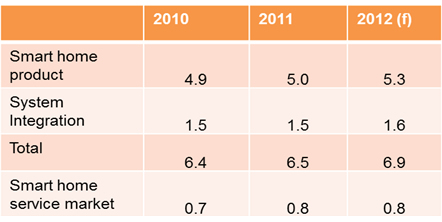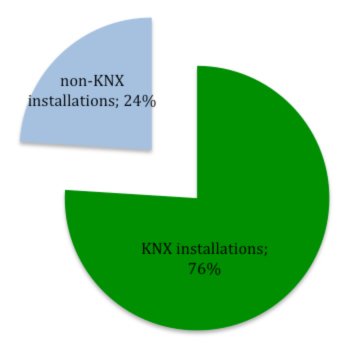
 By Piero Russo & Oleksiy Danilin, BSRIA.
By Piero Russo & Oleksiy Danilin, BSRIA.
In this series of reports, we highlight key findings of our European Smart Home Market Study which was carried out during 2011 with a view to anticipating how the market will develop over the coming years. We undertook the research by interviewing and exchanging information with the top players and stakeholders around Europe, and the resultant study is the one of the first to comprehensively analyse all of the available knowledge on smart home technologies and generate reliable market data.
The project includes nine in-depth reports on different European markets: Germany, France, UK, Netherlands, Belgium, Norway, Sweden, Denmark, and Poland. In this issue, we will summarise the results for Sweden.

Size of Smart Home Market in Sweden
Sweden is not the biggest smart home market in Europe. Compared to other more advanced country markets, it does not show outstanding growth rates. However, it has the potential to outpace its current major Nordic rival, Norway.

In 2011, the overall smart home market value in Sweden, combining residential and commercial installations, amounted to 17.3 million Euros, of which residential applications accounted only for 29% (5 million Euros). The remaining 71% was generated by installations in the commercial sector. Indeed, the residential sector is still rather underdeveloped.

Despite the fact that residential installations were concentrated in the top-end segment of luxury villas, basic systems represented around 60% of the residential segment. However, this share has been decreasing slightly over the last couple of years, with more complex systems being installed.
KNX Market in Sweden
The KNX market makes up for the vast majority of the overall market size in Sweden, amounting to about 13.2 million Euros, or 76% of the total. Highlighting this dominance, over 500 installers and integrators in the country claim the ability to install/integrate KNX systems.

In the residential segment however, the share of KNX-based installations is smaller, as the majority of residential systems are basic, with not much room for applying KNX-based solutions. This situation is set to change, since the share of complex residential systems is increasing.

Conclusion
In the medium term, comfort and convenience will be the key demand-side drivers, with high-income households and commercial clients remaining the major client segments and generating stable demand. We expect however, that the market will be moving towards simpler and less expensive mid-range solutions, while assisted homes solutions are another interesting opportunity sector set to expand in the future.
Piero Russo is a Senior Market Research Consultant, and Oleksiy Danilin is an International Research Consultant for BSRIA, a specialist consultancy that offers worldwide market intelligence across a broad range of building infrastructure products and services.












